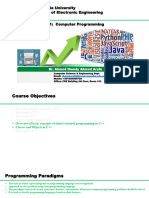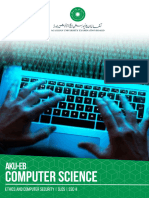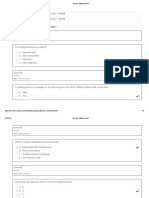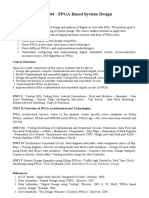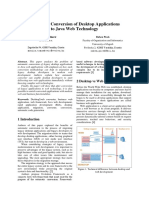0% found this document useful (0 votes)
84 views2 pagesProgramming Problem Solving Steps
The document outlines the key steps in the computer programming process:
1) Problem definition which requires clearly defining the problem before creating a solution.
2) Problem analysis which identifies the inputs, outputs, constraints, and any formulas needed to solve the problem.
3) Design which develops the steps to solve the problem using techniques like pseudo-code or flowcharts.
4) Coding which converts the design into an actual programming language.
5) Compilation and execution which translates the source code into machine language for the computer to execute.
6) Debugging and testing to identify and fix any errors in the program's functionality.
7) Documentation of all the problem solving and implementation steps for future reference.
Uploaded by
nepali broCopyright
© © All Rights Reserved
We take content rights seriously. If you suspect this is your content, claim it here.
Available Formats
Download as DOCX, PDF, TXT or read online on Scribd
0% found this document useful (0 votes)
84 views2 pagesProgramming Problem Solving Steps
The document outlines the key steps in the computer programming process:
1) Problem definition which requires clearly defining the problem before creating a solution.
2) Problem analysis which identifies the inputs, outputs, constraints, and any formulas needed to solve the problem.
3) Design which develops the steps to solve the problem using techniques like pseudo-code or flowcharts.
4) Coding which converts the design into an actual programming language.
5) Compilation and execution which translates the source code into machine language for the computer to execute.
6) Debugging and testing to identify and fix any errors in the program's functionality.
7) Documentation of all the problem solving and implementation steps for future reference.
Uploaded by
nepali broCopyright
© © All Rights Reserved
We take content rights seriously. If you suspect this is your content, claim it here.
Available Formats
Download as DOCX, PDF, TXT or read online on Scribd
/ 2

